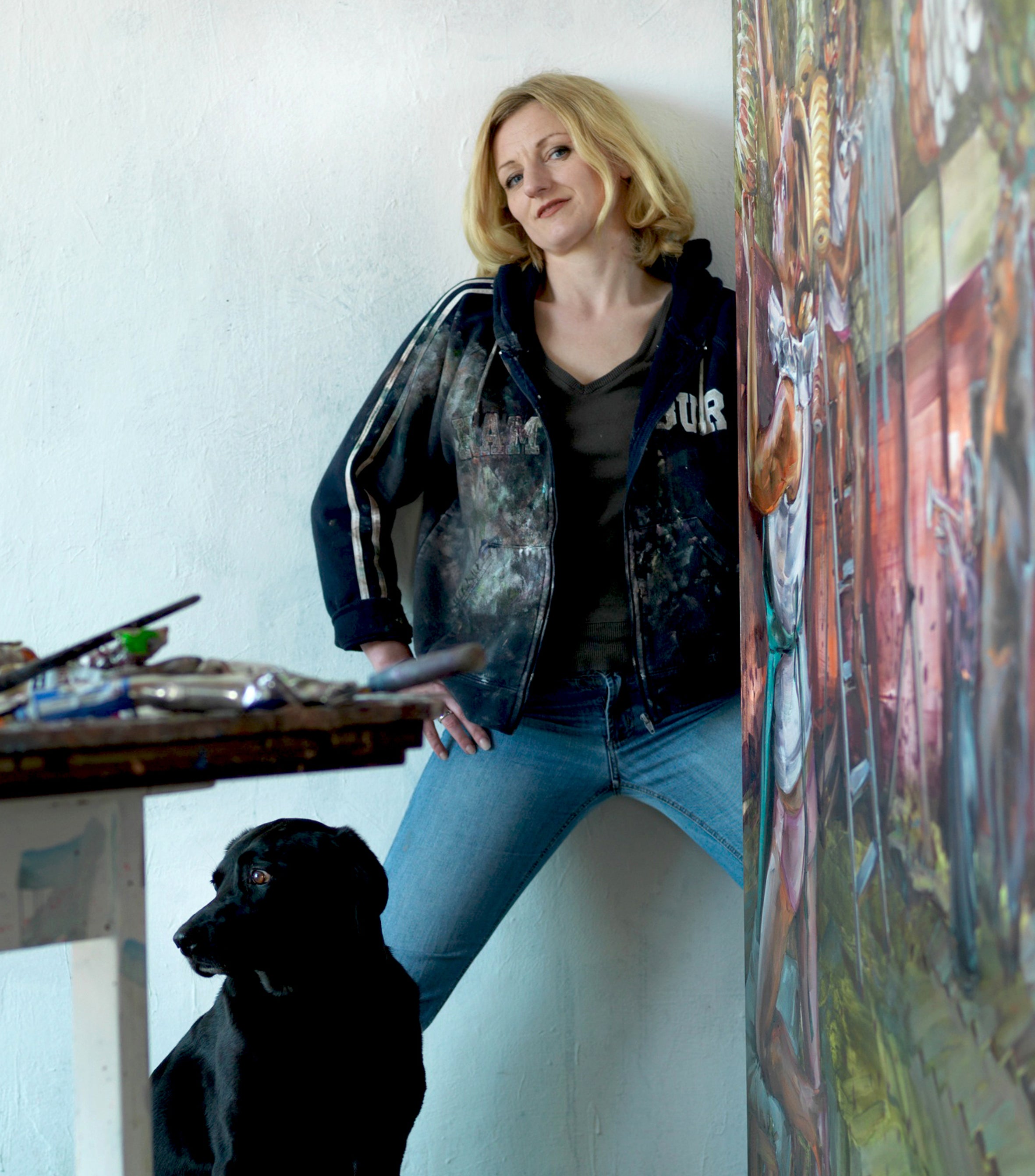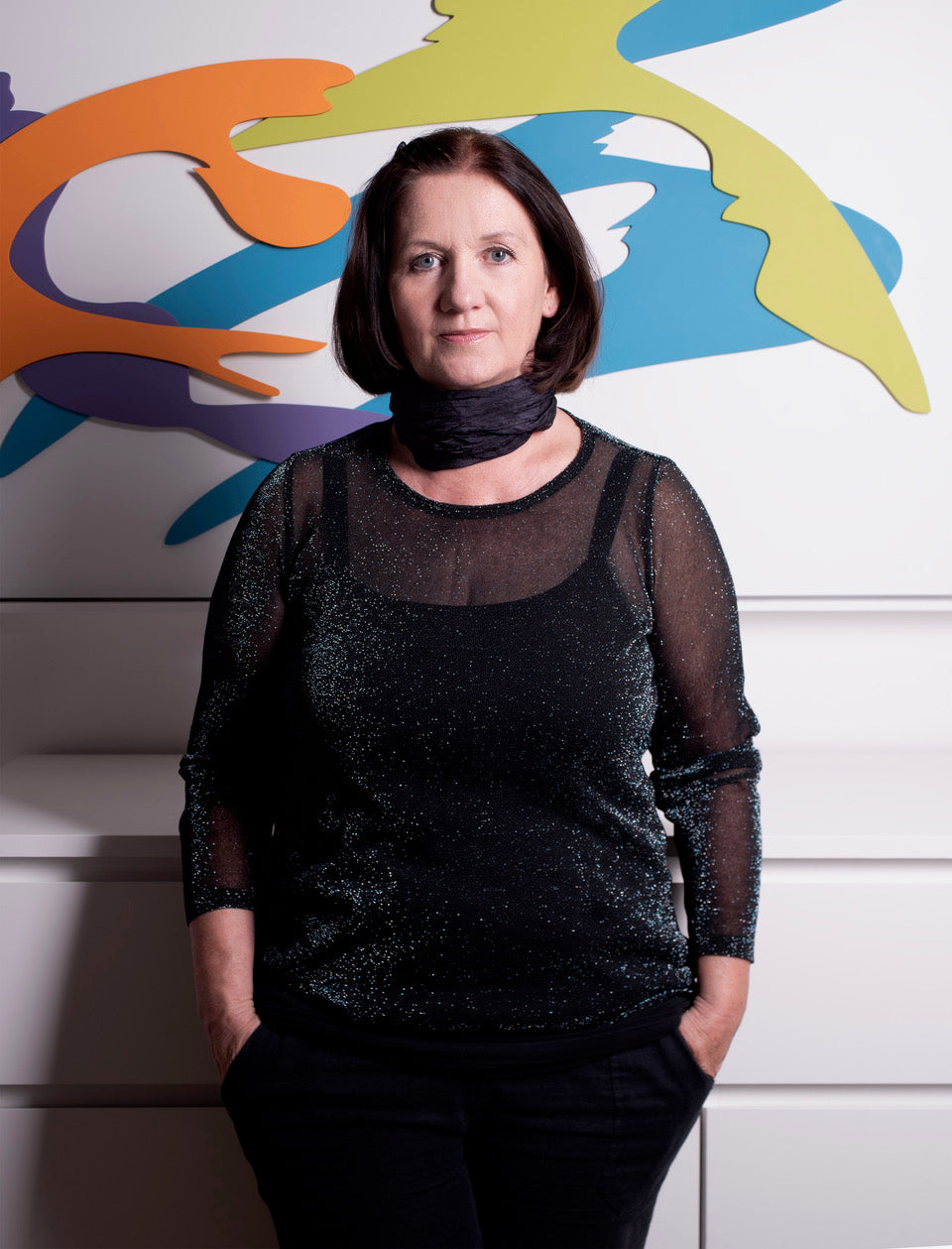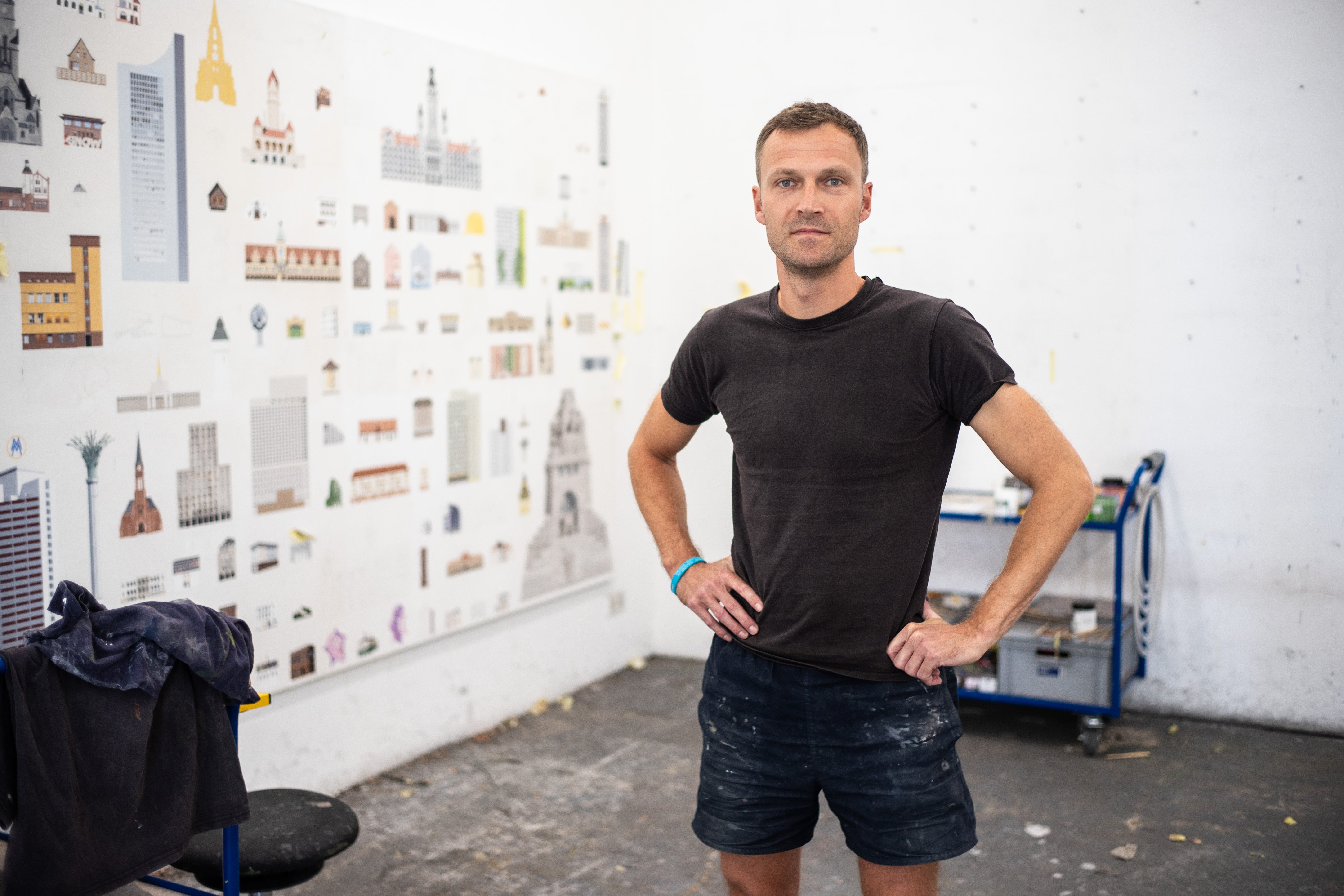Artists in Residence: October 2025

Justine Otto
In my paintings, I draw on traditional genre concepts of Western art and transform them into new interpretations. A general theme is the human condition and group dynamics, viewed both through the lens of past eras and in light of the current world situation. A central question is how ‘heroes’ are generated and why so many people follow them. This led to my “Heroes” series, inspired by old black-and-white photographs from the Imperial era. I abstracted these images of generals and soldiers, transforming them into cubist-like heroes that question the cult of masculinity and the creation of heroic images.
These themes also form the background of my current “Crowds” series, where crowds are partially recognizable but overlaid with abstract layers that often resemble decorative elements and patterns. These layers merge in the painting process and have both destructive and creative effects, with continuous references to classical and modern painting.
My work moves between abstraction and figuration. Both elements are closely interwoven and appear equal. My painting process usually begins with drawings and collages that serve as a framework or idea, brought to life through painting. The themes develop like a red thread from one painting to the next.
Technically, I employ various methods: spraying, wet-on-wet painting, masking, scraping, spatula work, dissolving with turpentine, and stamping. I have developed and refined a variety of tools and techniques over the years and incorporated them into my repertoire. I continually experiment with different supports and materials.

Árpád Forgó
Árpád Forgó is interested in experimental painting, in the question of broadening the interpretation of non-figurative panel painting by keeping its painting feature and by exploring the borderline between painting and sculpture. Structure, shape, measurements and rhythm together with planar and spatial relationships are the focuses of his research. He investigates the relation between one and several, the issue of cardinality, oneness, unity and division, the whole and the segment. He works with traditional painting materials - paint, canvas and wood-; aiming for industrial perfection, still keeping the craftsmanship of the process.
Currently, he is researching modularity and perception, which he considers exciting fields to expand boundaries of a wall work. He keeps developing shaped canvas panels and through isometric transformations, building block-like, hollow, symmetrical or unsymmetrical modular compositions. He also experiments intensively with different compound painting processes in order to challenge the viewer’s perception not only by the structure but also by the material.

Ulrike Buhl
Ulrike Buhl lives in Berlin and Sassenberg (Germany). She studied acting and singing in Vienna, Hamburg and Berlin. Rhythms and musical structures, modulations of lines play a major role in her works. However, she is not concerned with rigid perfection, but gives room to uncertainties and weaknesses. She deals with unusual materials and techniques throughout her artistic work.
In her work, apparent contradictions such as microcosm and macrocosm, art andscience, nature and fiction, organism and high tech meet. The linking of contradictions can be found as a background motif in all of Ulrike Buhl’s works. In addition to sculptures, she creates reliefs, collages and installations from various materials. The internationally exhibiting artist presents her works in solo and group exhibitions, among others in Munich, Duesseldorf, Berlin, Turin and Athens.
Ulrike Buhl comes primarily from sculpture and installation. Ambivalent, constantly changing, mutating, Buhl’s works are futuristic sculptural installations that depict a world in constant flux. Her works oscillate between beautiful and menacing, man- made and natural. On the one hand, the visual characteristics of the pieces automatically suggest something unnatural, man-made, and inorganic; Through the visual qualities of shimmering car paint and shiny surfaces, we are prepared for something wondrous and magical. On the other hand, the forms are biomorphic, natural and spontaneous, resembling magnified viral structures or microorganisms, symbolising the endless cycle of creation found in nature. The energy in the works is escalating and it feels like they will explode at any moment.

Robert Seidel
“Mobility seems to be one reason for the diverse interests reflected in my painting. Distance must be covered, experience gathered and processed. Even if new challenges are tackled slowly and tentatively, or sometimes remain open-ended, I am very grateful for the opportunities and insights that painting offers me. I am convinced that movement, whether physical or mental, promotes empathy and tolerance, and that these virtues are essential for a functioning society.” - Robert Seidel
Robert Seidel (1983, DE), lives and works in Leipzig, Germany. He studied painting at HGB Leipzig under the mastership of Neo Rauch. Seidel’s paintings enjoy an enthusiastic following in The Netherlands, Germany, and outside, and are part of numerous renowned private and public collections worldwide. Even though all works by Seidel start with observation, they are far from mere depictions. Every shape, no matter if it is a logo or a vast architectural structure, is analytically considered and relieved from its original context before being reconstructed into Seidel’s geometrical painting style.
